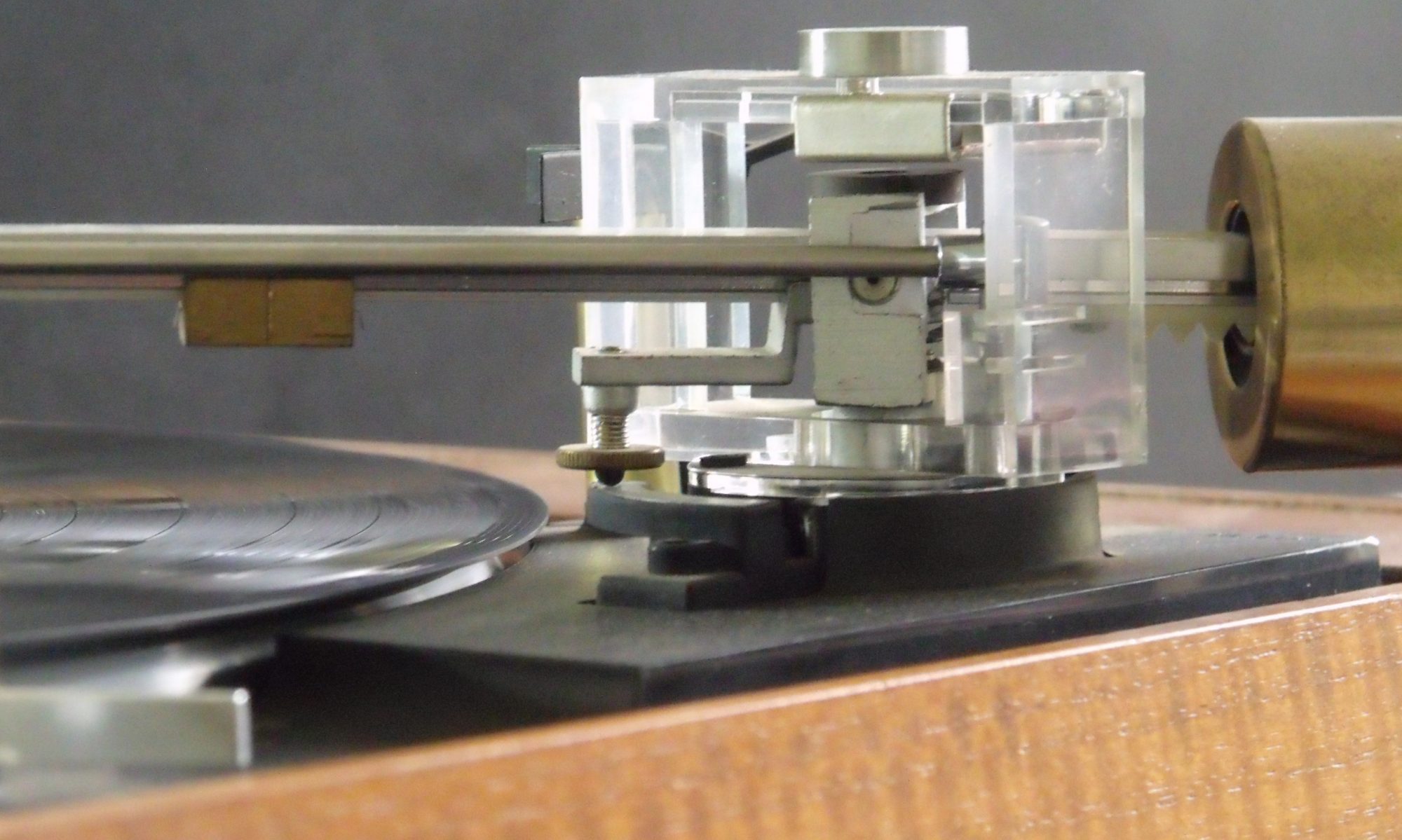All is not what it seems with this little unit that I picked up for just £5 from a boot sale.
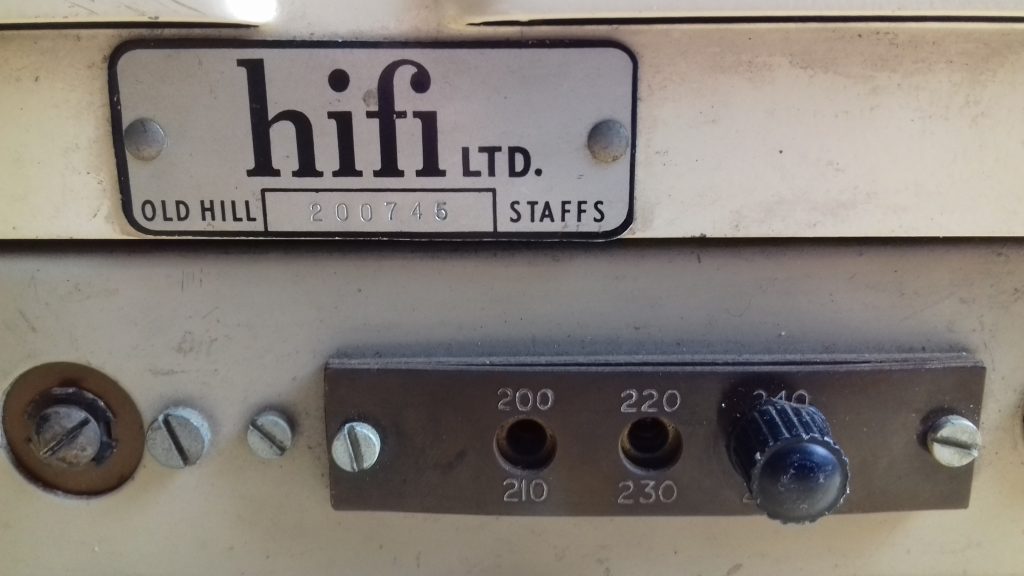
I was drawn to the cool retro looks of the painted metal box so I bought it just for it’s potential as a case for an electronics project. However, as soon as I picked it up and felt the weight it was clear that this must be valve electronics. It may seem counter intuitive for heavy weight to indicate valves when they are known to contain not a lot. Even the air is taken out! The weight comes from the large transformers which are necessary in valve circuits. To support the transformers a strong metal chassis is needed. The weight soon adds up.
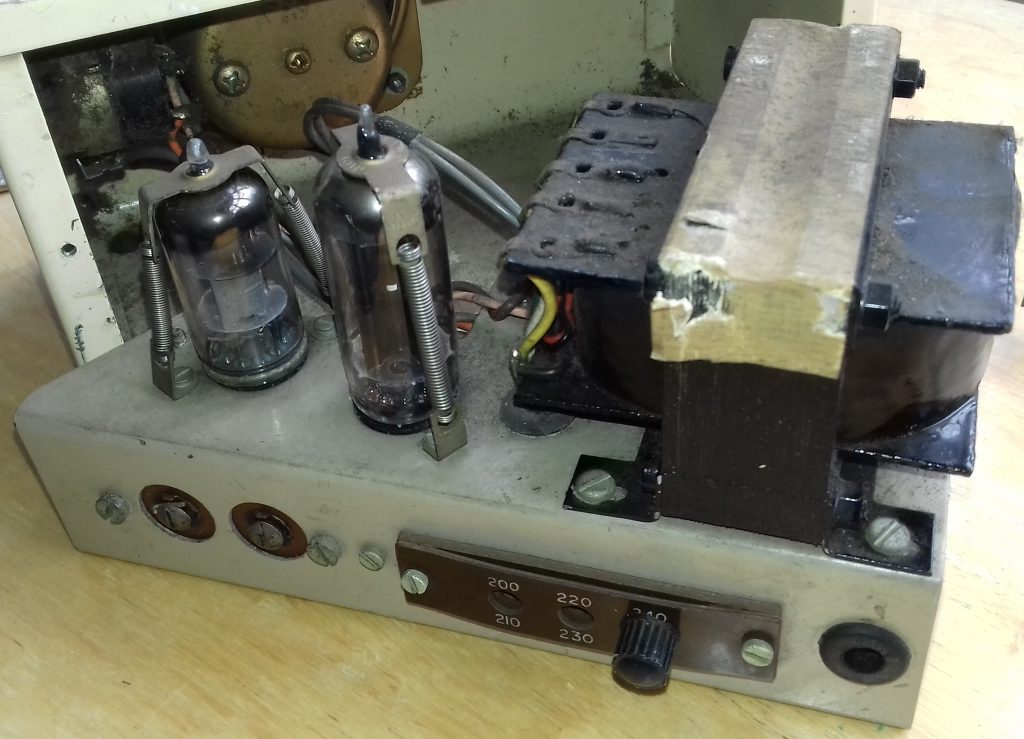
This is a standard two valve audio amplifier circuit as found in many products. It features a transformer to convert the mains to the voltages needed by the rest of the circuit. A rectifier valve coverts the AC power to D.C. The second valve is the amplifier. Another transformer, hidden in the chassis, is used to match the valve output to the speaker.
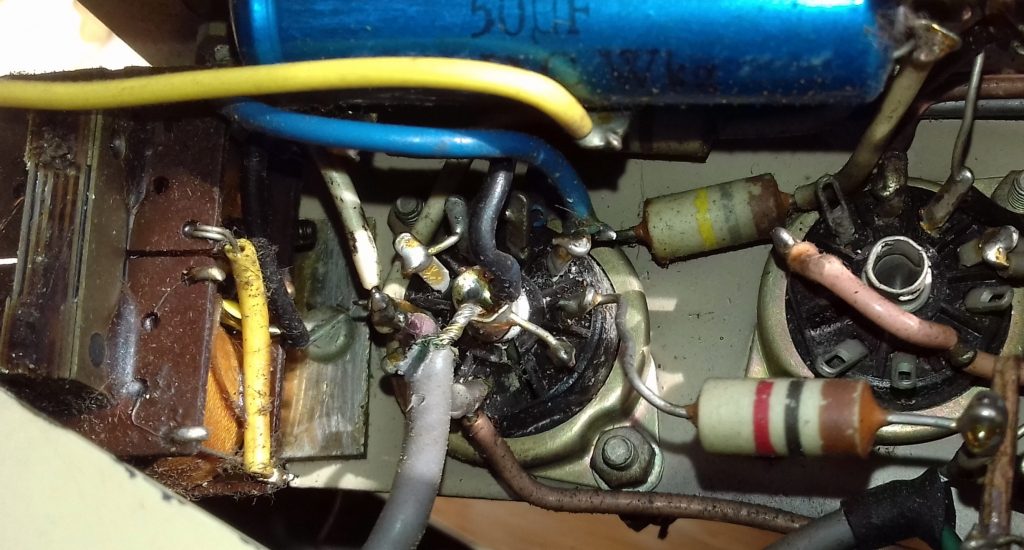
Looking underneath we see a third transformer, that you would not expect, which allows connection of a loudspeaker to the input. That speaker would act as a crude microphone and provides the key to the true purpose of this unit.
This is not a HiFi amplifier. It is in fact an early baby alarm.
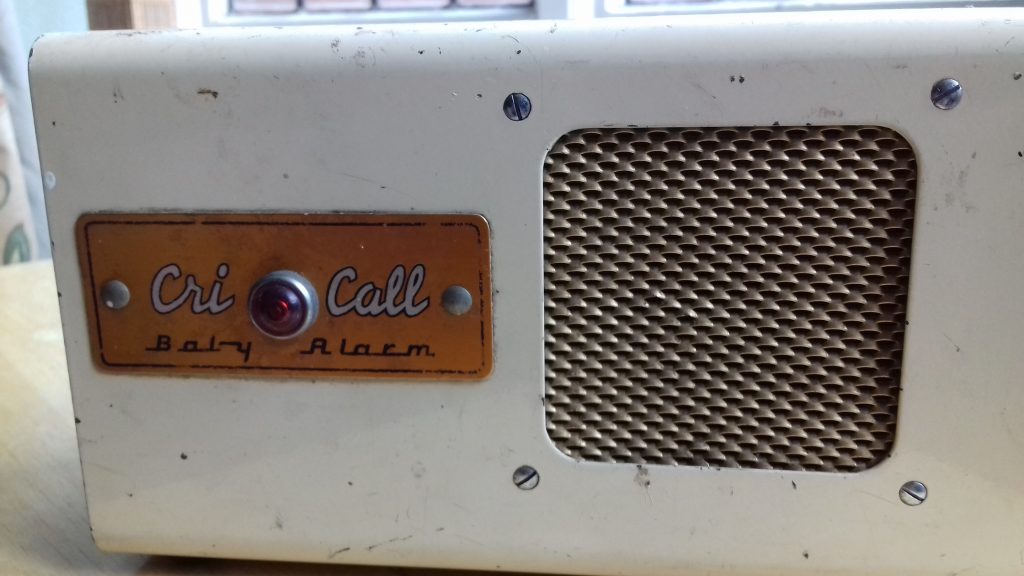
It’s filthy, but it works. I had to fit a new mains cable and re seat the valves. When connected a loudspeaker to the input it worked as a baby alarm. I tried connecting an iPod and playing music through it with mixed results. Music was heard, but it was very “tinny”.
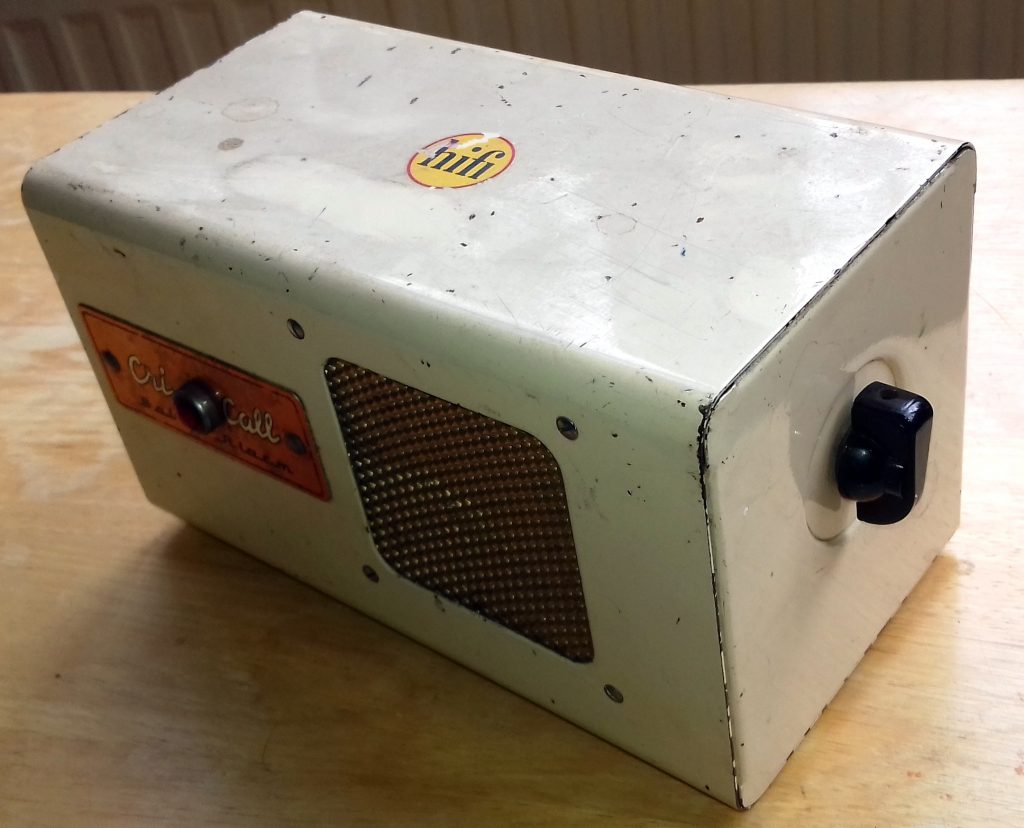
The plan for this is to convert it into a cool retro speaker. I have a Bluetooth converter somewhere in the workshop which I expect to be able to interface without too much trouble, bypassing that input transformer. When it happens, I’ll be sure to describe it here.
